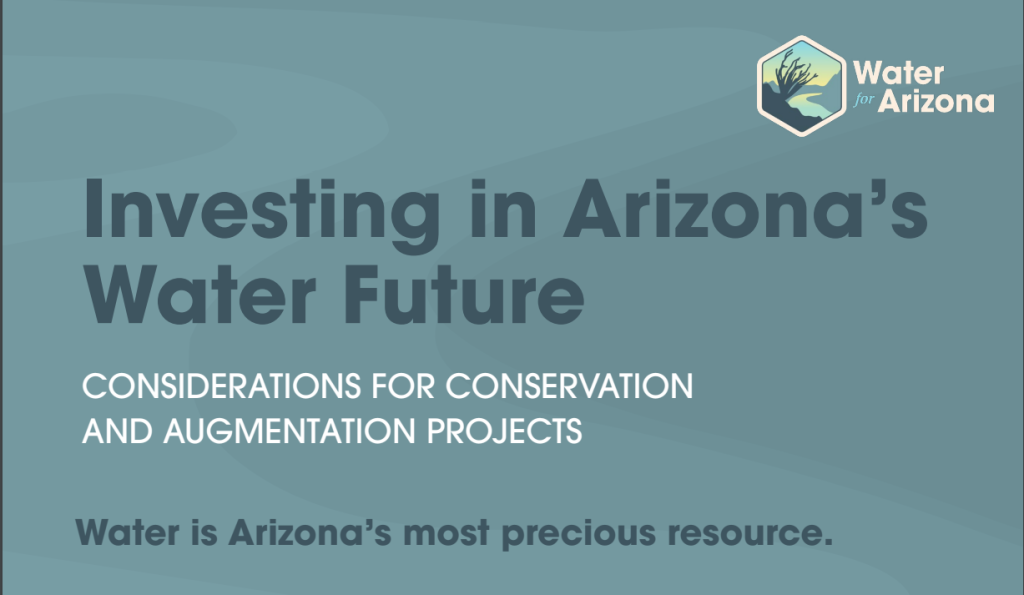This blog is co-authored by Rachel O’Connor, Manager, Climate Resilient Water Systems.
As Arizona’s water crisis worsens due to extreme drought and overuse, more attention than ever is being directed toward addressing this critical issue. At the federal level, an influx of funding has become available through the Bipartisan Infrastructure Law and Inflation Reduction Act. And at the state level, the Water Infrastructure Finance Authority (WIFA) has just begun accepting proposals for its first allocation of $200M for water conservation projects.
While differing ideas abound, it is critical that our finite time and resources are dedicated to a combination of sensible and distributed multi-benefit projects that stand to bring genuine benefits to Arizonans and the environment. Single “silver-bullet” solutions are often unrealistic and obscure potential negative social, economic, and environmental impacts.
To facilitate the conversation, the Water for Arizona Coalition, which includes EDF, has released a new report titled, Investing in Arizona’s Water Future. The report provides a succinct overview of some of the water conservation and augmentation options that have been brought forward including estimates for the water benefit, cost, and time-frame for each option along with additional considerations.
Know Your Options
The following seven project types are explored in greater detail in the full report. This list is by no means exhaustive, but is intended to provide a launch point for thoughtful discussion.
- System Conservation. A Lower Colorado River Basin program in which participants agree to implement specific and temporary water conservation measures in return for monetary compensation. By using less water, water users bolster water levels in Lake Mead.
- Landscape Conversion Programs. Municipalities offer financial incentives, such as rebates, to property owners for converting turf to native, low-water-use landscaping. Several Arizona cities have developed and implemented their own programs.
- Agricultural Irrigation Upgrades to Drip. Irrigators replace or supplement flood or sprinkler irrigation systems with drip irrigation. Drip, sometimes called micro-irrigation, uses low-pressure water pipes to slowly drip water onto crop roots and stems.
- Invasive Plant Removal and Replacement with Native Species. High-water-use invasive plant species are removed from riverbanks and replaced with appropriate native plant species that can thrive in that location and may improve soil and river health.
- Aquifer Recharge. Stormwater, reclaimed water, and surface water can all be used to recharge aquifers. Recharge can enhance natural areas e.g., wetlands and streams or occur at constructed recharge facilities. The captured water is stored underground to replenish aquifer levels
- Desalination. Desalination removes salt (brine) from saline water to be used as freshwater. Recent Arizona desalination conversations propose binational seawater desalination in cooperation with Mexico and intrastate brackish aquifer water desalination.
- Mississippi/Missouri Pipeline. A diversion dam and pipeline would harvest floodwater from either the Mississippi River or Missouri River and transport it across hundreds of miles to augment Arizona’s water supply.
Choosing a Water Secure Future
The hydrologic variability and overallocation of the Colorado River system leaves Arizona critically vulnerable to water supply shortages, increasing dependence on in-state ground and surface water. It is imperative that the state make conscientious water investments to ensure long-term prosperity for Arizonans. The Water for Arizona Coalition report encourages decision makers and other stakeholders to carefully examine the full range of water investment opportunities before them and underscores that no one option alone will be sufficient to address Arizona’s water problems.
It’s also important to recognize that managing water holistically means more than diverting funds to water projects like those briefly described in Investing in Arizona’s Water Future. Good policy is critical to complement such projects and ensure that the water we do have is managed to support Arizona’s families, communities, economy, and environment in the long-term. The Water for Arizona Coalition’s Arizona Water Security Plan outlines six water policy challenges and recommends six bold actions we can take to address them.










